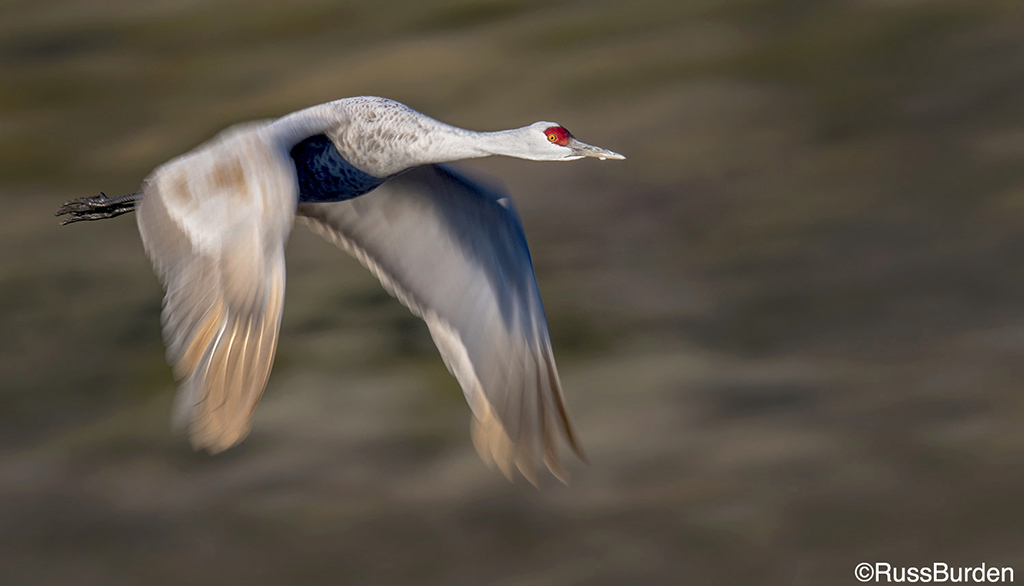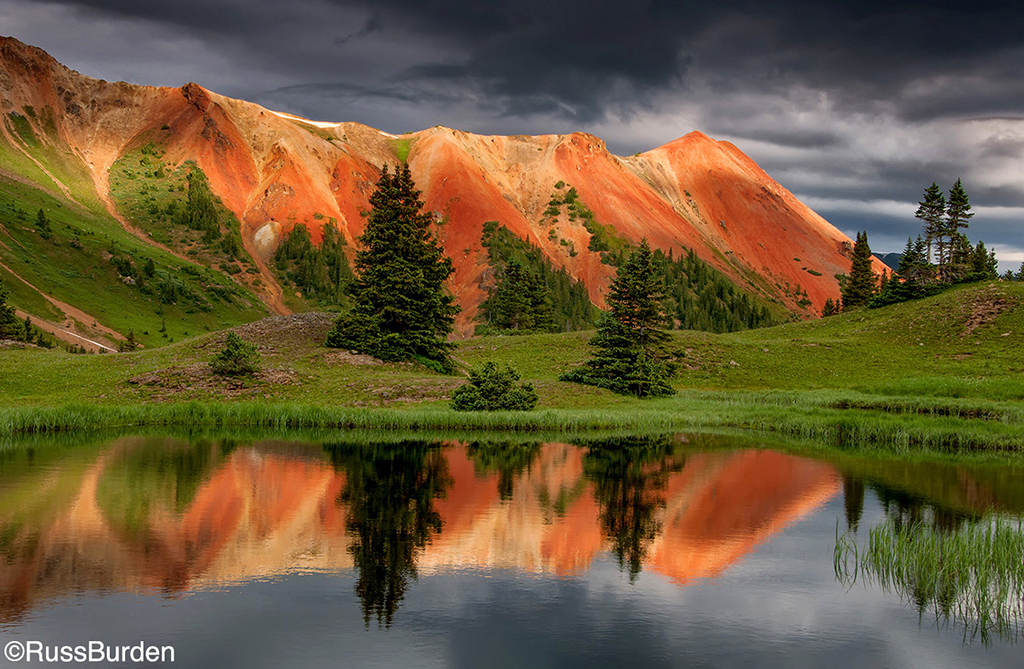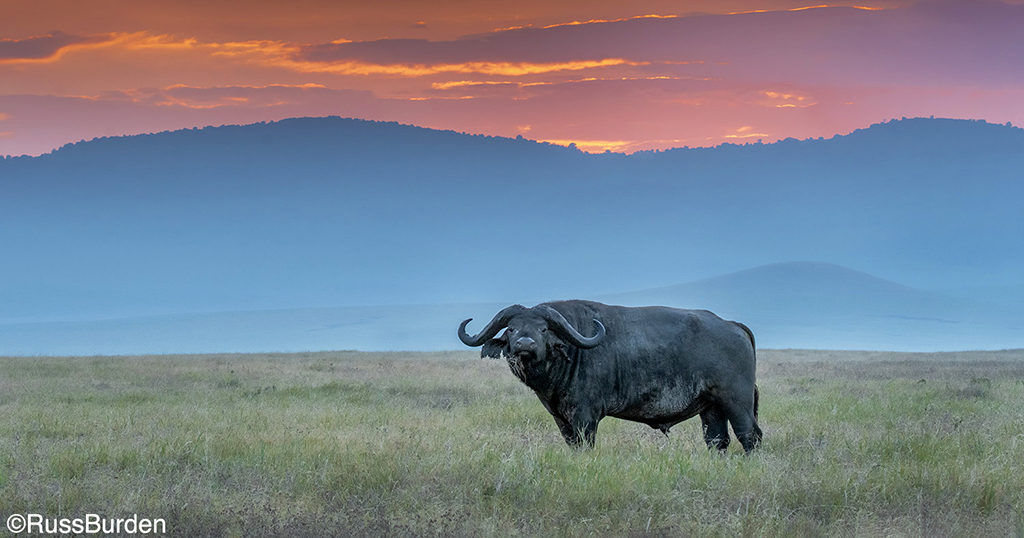Advertisement
Advertisement
Read Next

10 Action In Nature Quick Tips
As you know, nature photography isn’t...
Critically Sharp Captures
To obtain excellent-quality, tack-sharp...
Get Drenched In A Downpour Of Pixels

Get Drenched In A Downpour Of Pixels
Over 70 percent of the Earth’s...
The Amount Of Light Dictates The Strategy
Thick gray clouds, dawn, interiors,...Advertisement


The Art of Luminosity, Part 3
In the previous articles in this series, we’ve discussed the ways to recognize great light and the best camera techniques to capture it. Now it’s time for the last step, understanding when and how an image needs to be post-processed.
This is a panoramic scene created by focus stacking four images, including one image captured with the focus on the stars and the other on the cave. During the exposure for the cave, I used a small light panel for illumination. The four images were stacked manually before merging the entire scene.
Over the years, I’ve developed a method for producing images that have the correct contrast ratio for printing or publishing to the web while also incorporating my own style. This mostly subjective part of producing your personal work links with your pre-visualization and camera technique. Think of this method as adding furniture to your home to make it yours.
Post-processing is not just a technical function but rather a blend of technical and creative skills required to create the final image. When editing an image, I consider it a performance that combines my pre-visualization, editing skills and passion for my art at that very moment in time. Future edits of the same file might vary, not just because of my improving skills but also due to changes in my focus and emotions.
Each scene is different and affects the way I feel. I consider this, plus the technical aspects of the process when editing, before making any actual edits. I make some edits globally and leave others for a masked region where I can control the color and density to help lead the viewer’s eyes through the scene.
This scene of Cimon della Pala in the Dolomites reveals how imperfect light can be handled with the aid of post-processing. The soft shade of the morning and the atmospheric haze were important aspects of the light in this scene that inspired me to create a final image. I used two techniques in camera to accomplish what I had in mind: focus stacking and ETTR. If I did it just right, I could then complete the process in post-production by increasing the brightness of the flowers in the foreground from a shadow to a midtone. Notice the flowers are in shadow. Notice the sky is a highlight. Notice the soft, low contrast light on the meadows in the middle. These are all aspects of the time of day and position from which the image was taken. The light in the sky is a highlight, and the foreground is in shadow. Because the light was not optimal, I was inspired by my understanding, or pre-visualization, of what this scene would become. I used ETTR for the exposure, giving me the most shadow information possible for the post-production work ahead. The exposure used for these four focus-stacked files had to be very accurate, placing the very right edge of the data at the very right of the histogram. This allowed for maximum brightness in the foreground shadows while not clipping the highlights. I used masks to bring up the shadows in the foreground to midtone values.
Adobe Lightroom Classic is the tool I use most often and is the focus of what I want to show you. While I still use Photoshop and have invested 10,000 hours in it over the last 20 years, I am quite pleased with the improvements in Lightroom and find that I can complete most of my editing without Photoshop. Masking is the main reason I focused on Photoshop for so many years as it allows me to create more intricate masks and gives me the opportunity to combine multiple images together manually, something Lightroom is incapable of doing without the aid of automatic HDR or Merging. Yet Lightroom tools have progressed significantly, allowing me to feel confident in showing you all that can be done with them.
Lightroom Tools For Adjusting Contrast
Before we get into my processing method, we need to discuss contrast. Lightroom offers several tools to change the contrast of an image, each producing dramatically different results. You may use some of them already without realizing you are adjusting contrast.
When you change the contrast of an image, you alter the luminance of all affected pixels. Any tool used to increase or decrease the density of a pixel changes the contrast. Some tools apply contrast globally, while others use masks to affect only a specific region.
The effect of adjusting the contrast of an image is essential when working with RAW image files. RAW image data is designed to look flat and lacks contrast. This gives you, the photographer, the opportunity to apply the contrast to your preference rather than the camera doing it for you. Editing in Lightroom uses an RGB color space that allows the editor to manipulate contrast and color simultaneously. This means that when you change the luminosity of pixels, you also change the color. After making dramatic contrast changes, you will notice changes in the saturation. Typically, as you add contrast, you also increase saturation. Each tool we’re going to discuss has a unique way of adjusting contrast, with some having a greater impact on color than others. The trick to applying contrast adjustments is to apply them region by region; do not apply them globally. If you sharpen your file in Lightroom, use the Masking slider within the Details Panel, as I’ll explain.
Sharpening
It is important to understand that sharpening tools adjust contrast to change the apparent sharpness of an image, even though it is not normally considered to be a contrast tool. The top two sliders in the Detail Panel under Sharpening are Amount and Radius—these sliders are by far the most critical. The Amount slider allows you to increase or decrease the contrast ratio along the edges of all detail. The Radius slider allows you to increase or decrease the number of pixels affected by the Amount slider—when you increase Radius, the area affected is larger. If you increase the radius too much and the viewing distance to your final image is too close, a halo becomes visible. If viewed from a greater distance, the halo appears as a sharper edge. These sliders work on what is called a “kernel,” which is a special type of mask that determines what is an edge (and therefore should be sharpened) within the image.
Because sharpening tools should not be applied globally, Lightroom offers a slider within the Detail Module called Masking, which alleviates potential problems caused by global sharpening. This slider creates a mask of all the regions within your image that hold very little detail and are outside of the kernel. When you increase the value of this slider, more and more of the image is masked away, allowing only specific regions, or what is within the actual kernel of data around all the edges of your image, to be affected by your sharpening settings. If you hold the Option key (Mac), or Alt key (Windows) while dragging this slider to the right, Lightroom reveals the masked areas in black, leaving the region in white that will be sharpened. Slide this right until the regions like a sky go black. I rarely go past 50, as this will create a visible edge to the mask or kernel.
Texture
This tool is used to adjust the amount of contrast in detail similar to edges but larger in size. A sharpening kernel of data might hold edges with 1 to 5 pixels. Texture affects edges that are even larger, such as all the limbs of a tree. This tool can also reveal halos when overused.
Clarity
This is used to adjust the amount of contrast in subjects closer to midtones. It is often used to add more contrast to cloudy skies. This tool rarely creates halos, but if it is used to extremes, it does reveal digital noise.
Contrast
The Contrast slider affects large regions and is typically used when making global adjustments. This tool controls much larger regions of darks and lights, making everything brighter than a midtone even brighter and everything darker than a midtone darker. There are several other ways to adjust and refine contrast in an entire image, including the Tone Curve, Highlight, Shadow, Blacks and Whites sliders. The Contrast slider is a basic tool that I rarely use because it does not offer the control I prefer.
One other tool, Dehaze, affects contrast but is so different from the other tools that I left it out of our discussion on contrast. Dehaze is a combination of contrast and color saturation. Yes, it’s true that when you increase contrast, color becomes more saturated, but Dehaze also increases the density of the color as well as the saturation. Increasing Dehaze adds contrast and darkens colors, like using a polarizing filter on your lens.
The Infamous Tone Curve
Using the Tone Curve takes practice and is less intuitive than a simple slider, so many new users avoid it. I learned how to adjust contrast with a tone curve and still believe it is a very powerful tool. The Tone Curve is a global editing tool and can be compared to the Basic Panel luminosity sliders. There are a few differences between the Tone Curve in Lightroom and Photoshop, but the basic function is the same. It gives you complete freedom to adjust all the contrast in any image.
You can add points to the curve at any given density between black and white, then adjust that point by dragging it up to make it brighter or down to make it darker. This is all done on the RAW data on a linear scale. The Targeted Adjustment Tool (TAT) can be used to reveal where the density in your image is on the Tone Curve and then edited accordingly. In the upper left corner of the Tone Curve module, look for the small circle and click it once to activate it. Now scroll over your image, and you’ll notice the appropriately linked dot appearing on the Tone Curve in the exact location of the density that density is linked to in your tool.
One of the reasons I prefer to use the Tone Curve for larger, more invasive edits is that the tool is not adaptive based on your image data but rather independent and capable of moving the data the same on any image file. When you use the sliders in the Basic Panel, such as Shadows, Highlights, Blacks, and Whites, it is possible to adjust them too far and create halos between areas of greater contrast. While you can adjust the Tone Curve too far, it does not create those same halos because it does not use masks when applying the adjustment to the image. The Basic Panel sliders are adaptive to your RAW image data and vary based on those values. Using the Basic Panel sliders may look better on certain images, but there are plenty of times when it is not the superior method to set the contrast range, adjust the midtones or to add contrast. Without the masking effects, the Tone Curve offers a very powerful editing solution.
Dark & Moody
Dark & Moody. This image was taken before sunrise under a thick layer of clouds. I employed this dark light to create a mood and a long exposure to soften the water and clouds. I used masks to lighten up the darker midtone regions in and around the brighter water, as well as to lighten the forests on both sides of the stream.
Editing images can be just as exciting as photographing them. Wild weather in remote locations and memories of favorite cinematic Hollywood features have influenced the way I portray my landscape images. The lighting created for movies like “Lord of the Rings” reminds me of times I’ve spent in the wilderness. Hollywood is full of examples of movies that portray dark and moody scenes that can influence us in various ways.
A big part of what we remember about times in our lives is the mood. Moods are created by influences we might not understand but direct us in the portrayal of the stories we tell. In the dark of a storm that lasted for days, I remember feeling comforted not by the fury of the weather but by the subtle nuances of what was left to observe, the little things and the stillness. Places where the quiet is loud and reveals an almost motionless and sublime world. I started looking for scenes where darkness comforted me, rather than making me nervous, and settled in over me like a warm blanket.
Light & Bright
Light & Bright. In an effort to reveal the softness of windswept dunes and lose any bold colors, the Tone Curve was the perfect choice for making these edits. By removing contrast and color saturation from this scene, this image reminds me of the location. It is unusual for me to remove contrast and color in any scene, but this image became more welcoming when the pastel colors were revealed.
Bright images convey happiness and warmth and can bring back positive memories. Sitcoms in television use high key lighting in most productions to convey the very same upbeat mood. It was originally used back in the film days to control contrast by simply limiting shadows to fit onto the limited dynamic range of the film. I suppose the technical requirement to lower the contrast ratio determined the light, bright look. This very same method can be used in landscape photography as a powerful tool to create the mood of a scene.
This technique works well in nature if you focus on compositions with structure. Good examples of structure include a dead tree skeleton against a bright sky, patterns of rounded boulders separated by dark shadows, and layers of ridges wandering off to the horizon. Each example is a graphic composition with bold lines. I use ETTR (Expose To The Right, discussed in part one of this article series) on many subjects during the middle of the day to accomplish this look.
Light & Bright. In this scene, morning mist inspired me to lighten up the mood. It was a dark, rainy morning, everything was dripping wet, and the rocks were slippery. The color cast was blue because the sun had barely risen. The mist made this scene easy to transition into bright as I was able to color balance on the mist to eliminate the blue cast that was adding to the gloomy mood.
Brightening an image begins with understanding what you’re doing. Many of the shadows become midtones, and most of the midtones become highlights. The highlights might even get blown out or clipped. You create this look when you brighten all your luminance values by about 25 percent.
Painterly
Painterly. The scattered clouds created some dappled light that cast shadows on Lake O’Hara below. These light and dark areas inspired me to attempt a painterly approach. I knew I would need to brighten the shadows from my first exposure, and my camera’s large sensor captured the dynamic range needed to brighten the shadows to a midtone.
I am influenced by the romantic painters of the American West, such as Albert Bierstadt and Charlie Russell. Both of these painters created drama with spectacular light to embellish the scale of the immense grandeur of the West. The scenes included many vibrantly colored clouds, and some paintings used atmospheric haze to create depth and add scale.
Painterly. The setting sun was sandwiched between clouds on the horizon, creating natural dappled light that was warm in color. Other clouds in the sky bounced additional light into the foreground, giving more detail to the shadows. Because I was pointing the camera into the sun, I had to shoot a seven-image HDR bracket to capture enough good shadow detail in the foreground rocks.
What made these paintings compelling was the dappled light. Often the subject would be highlighted by a shaft of light, resulting in a luminescence that was enhanced by the surrounding shadows. This luminescence is very difficult to achieve when photographing a grand scene. Being in the right location to view such magnificent landscapes with a similar light as the paintings became intriguing. I’ve included two examples here of the very deliberate way I process with this painterly style in mind.
Textured
Textured. Icebergs are a good example of a multi-surfaced subject that requires different tools for different sides. The sky behind the ice needs contrast, requiring a mask. The sunny side of the iceberg requires Texture, and the shaded side requires Clarity. I preferred Clarity on the shaded side because of the lack of fine detail and smooth surfaces. I made a separate mask for the sky and used Contrast and a bit of Clarity.
I’ve always been inspired by the amount of detail in nature. The shapes of geologic rocks, ancient icebergs and 3,000-year-old trees all have so much to study. Much of this small detail forces me to capture it with as much resolution as possible. Over the years, I’ve used many different types of cameras to capture high-resolution images. I’ve stitched multiple files from full-frame sensors, as well as from high-resolution medium format sensors. Capturing this much detail is fun to look at and post-process, but it is not the only way to highlight and display nature’s details.
Radical Edits
Radical. I made this image with a single file and multiple masks in Lightroom. At this time, masking in Lightroom was new, and I was testing its capabilities. I exposed this scene for the highlights so I would have enough detail in the cloudless sky to capture the morning colors. The shadows were less important for the success of the image because they would become a silhouette.
Out of the shadows! The light that is hidden in the shadows can be amazing. Our eyes do not see everything, and if we don’t squint or specifically look at the light in the dark areas of a scene, we might miss it. Light changes quickly, subjects can be moving, and sometimes you only have a split second to capture an image. The two examples I’ve included here are just that—quickly captured scenes with no time for fancy camera techniques. I used ETTR and hoped that I had enough information in the shadows to allow me to edit to my heart’s content.
Radical. While I love working in monochrome, I believe that color is more challenging when working on luminosity. When you no longer need to consider color during post-processing, it’s a simpler process because color limits each edit by adding the issue of color bit depth. Once you understand how to process color images, the transition to editing black and white is more straightforward. I was confident that I would convert this image to black and white when I captured it. Why? Because Japanese block carvings inspired me. When you study these works of art, you notice strong shapes created by unusual subject forms. The outlines become the compelling subject, which is exactly what these crazy splashing waves created. I chose to convert this to black and white to focus the viewer’s eye on the graphic shapes of the water and sun. The bright sky behind the waves helped delineate the wave profiles to create the necessary contrast. Because it was sunset and the sun was on a hazy horizon, there was much less contrast than during the brighter times of the day. There was very little detail in the shadows, but as you can see here, I used many masks to reveal enough detail to give the water texture.
Mastering The Art Of Luminosity
Understanding light and the impact it has on an image significantly improves the quality of your photography. By observing the characteristics of light, you become experienced in deciding how to visualize light and how it contributes to your art. When you create an image in this light that you’ve pre-visualized, it becomes unforgettable. As you put this information into practice, I hope you feel more prepared to capture those fleeting moments.
This three-part article series is excerpted from The Art of Luminosity by Marc Muench, available as a free download at muenchworkshops.com/ebook.